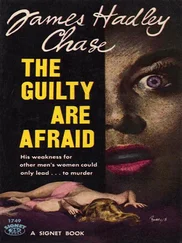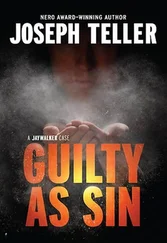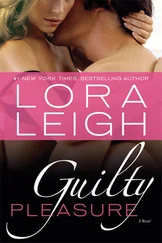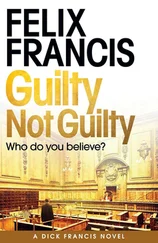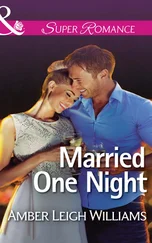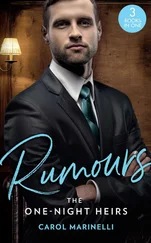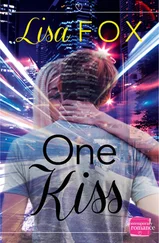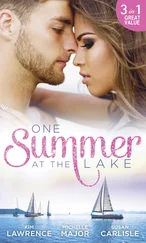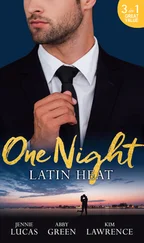But it is readers who complete writers, and my greatest debt is to my own early readers, without whose positive criticism, I may never have written another word: Kent & Mary Ballantyne, Rita Balneaves, Mary Fitzgerald-Peltier, Mark Kobine, Phil Mason and Elizabeth McCrone. This book would not exist without you.
While researching the novel, I read As If , by Blake Morrison, and The Case of Mary Bell , by Gitta Sereny. I would like to thank both writers for their very different but equally insightful portraits of children on trial.
Last, but certainly not least, a great many thanks to my wonderful agent, Nicola Barr, for her astuteness, her faith and encouragement.
THE GUILTY ONE
Reading Guide
READING GROUP DISCUSSION POINTS
*
Who do you
think ‘The Guilty One’ of the story is?
*
How do the two strands of the story complement each other? Do they work together successfully?
*
Who is your favourite character and why?
*
Do you think Minnie was right to do what she did?
*
Can you discuss Daniel’s resentment towards Minnie?
*
How well does the story explore the subject of fostercare and/or children in the criminal justice system?
*
What connections can you draw between the adult and the child Daniel?
*
Can you comment on the way in which the story explores the relationship between mothers and sons/adults and children?
*
Before
the big reveal at the end, did you believe Sebastian to be guilty or innocent?
*
What have you taken away from the story? What do you think it is trying to say?
AUTHOR Q & A
Have you always wanted to be a writer?
Yes, but not always a novelist. For many years I wrote poetry, which, as a pastime, is somewhat more sociable. I felt compelled to write long fiction because characters and their lives began to inhabit me.
Can you tell us a little about what inspired you to write The Guilty One and whether the writing process was an easy one?
I am always drawn to characters, and I was ‘visited’ by the characters of Minnie and Daniel. The other characters and the story of The Guilty One evolved as a result of trying to understand this fundamental relationship.
How did it feel to get a UK publisher for your debut novel?
I can’t describe it. Even now, months after the fact, I have trouble believing it has happened.
After your book deal in the UK, The Guilty One then sold around the world. How did you react to this?
Luckily I was very busy at work while all this was happening, and it helped me to distance myself from it. I still wonder if I somehow slipped into a parallel universe.
New writers are often advised to write about what they know. Do you know a lot about criminal law and foster care in order to have written about it so authentically?
I don’t write about what I know, but I do write about what interests me, and my commitment to the characters fuels my research. In wishing to make my characters believable, I want to make the worlds they inhabit believable too – however, I am still reticent to call my representations of these worlds authentic. At best I would hope they are believable. There are few things more fun than researching fictional characters. It is like stalking your own imagination.
Did your characters appear in your head fully formed or did they transform as the book evolved? Who is your favourite character?
Daniel and Minnie were very vivid – right down to the smell of them – from early on. Other characters, but also the adult Daniel, evolved as the story progressed.
Daniel is the most intriguing, and I wonder what he is up to now, but I admire Minnie’s bravery.
Daniel has a very strong view about the ways in which society should deal with juvenile criminals. Do Daniel’s views mirror your own?
The character of Sebastian developed almost as a construct to elucidate Daniel’s struggle with nature and nurture. The story suggests that criminals are made not born but the adult Daniel also highlights how out-of-step the UK is with much of Europe when it comes to children and criminal justice.
Do you think it was right for Minnie to lie to Daniel?
I think when we love people we often make choices that can be difficult to justify afterwards.
In your opinion, who is most guilty in the story?
Almost everyone in the story is guilty. They are all guilty in different and almost incomparable ways.
What are you working on now?
A story about obedience and rebellion.
WHAT IS ON LISA BALLANTYNE’S READING LIST?
Jonathan Franzen – Freedom (nearly finished)
Georg Simmel – On Individuality and Social Forms (just started)
Lionel Shriver – So Much for That (next week)
WHAT IS ON LISA BALLANTYNE’S BOOKSELF?
John Paul Sartre – Being and Nothingness
Simone de Beauvoir – The Ethics of Ambiguity
The Poems of Norman McCaig
Toni Morrison – Beloved
Richard Holloway – Godless Morality
Margaret Atwood – Cat’s Eye
Michael Ondaatje – In the Skin of a Lion
Joyce Carol Oates – We Were the Mulvaneys
Germaine Greer – The Boy
Milan Kundera – The Unbearable Lightness of Being
Robert M Prisig – Zen and the Art of Motorcycle Maintenance
John Irving – The World According to Garp
Olive Schreiner – The Story of an African Farm
THE TOP-TEN THINGS LISA BALLANTYNE HAS LEARNED ABOUT WRITING A NOVEL:
1)
Write if you feel
driven to, then you will always find it satisfying.
2)
Once it’s written, it exists – don’t think too much, write it down. It is easier to revise a finished piece of work.
3)
A writer writes.
4)
Spend time perfecting your work, but show your work to others.
5)
Read, read, read.
6)
Research is for background and for confidence. You don’t have to squeeze it all in.
7)
Live life, or you won’t have anything to write about.
8)
Write about what interests you, then it is more likely others will be interested.
9)
Exercise before sitting down to write.
10)
Delete as little as possible and keep all your drafts.

